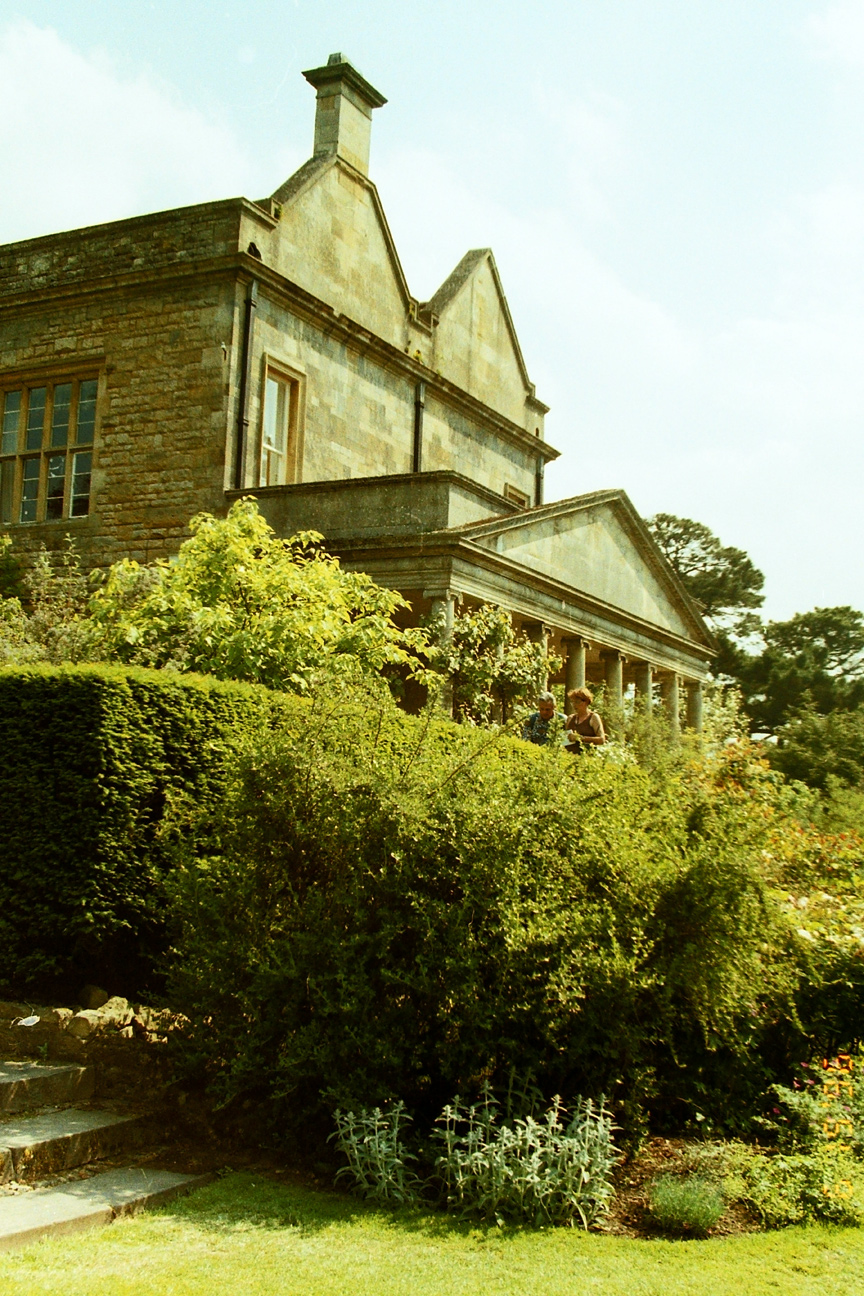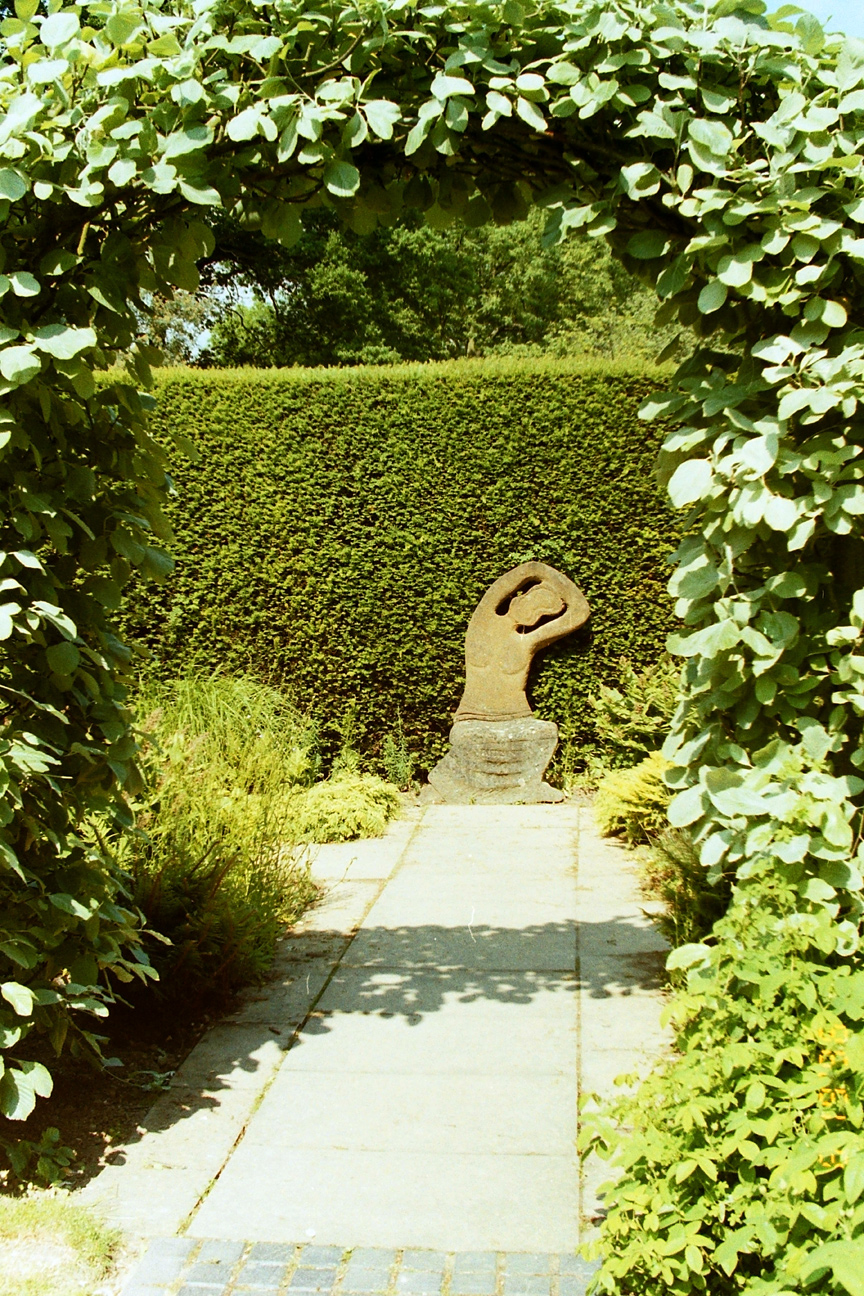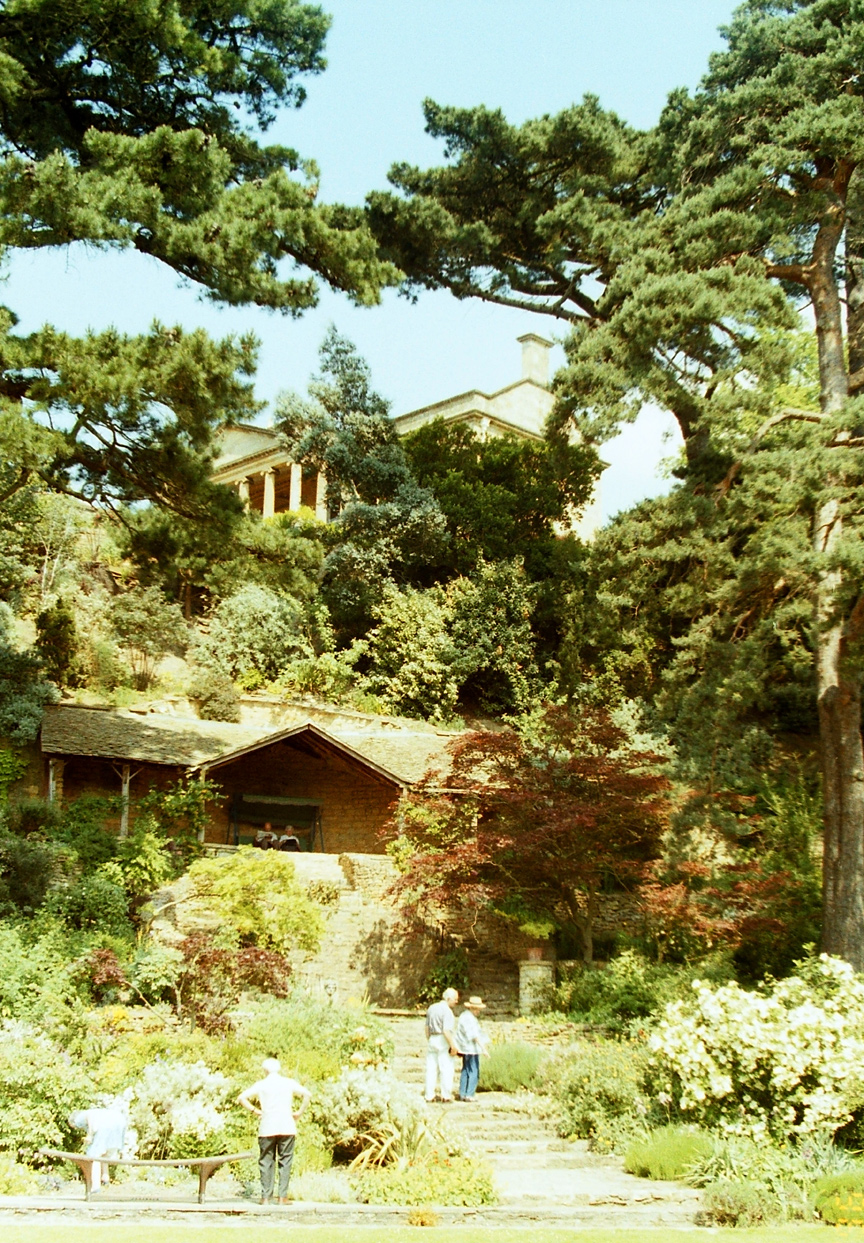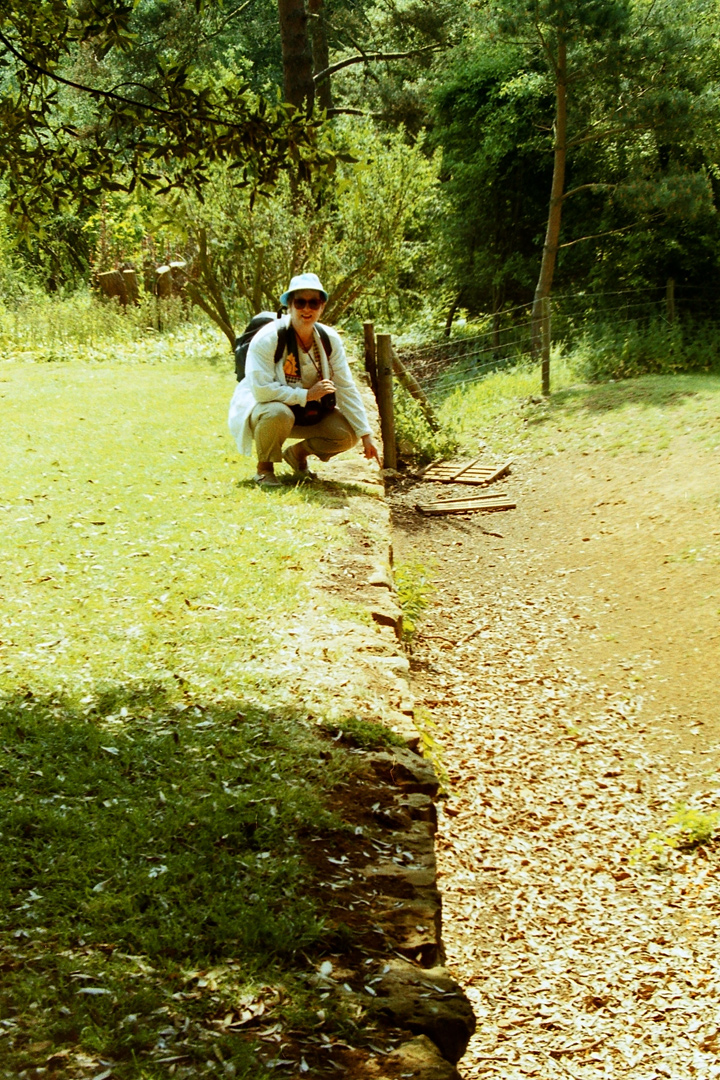

Kiftsgate Court Gardens

Kiftsgate Court Gardens is situated above the village of
Mickleton in the county of Gloucestershire, England, in the far north of the
county close to the county border with both Worcestershire and Warwickshire.
The gardens are the creation of three generations of women gardeners. Started by
Heather Muir in the 1920s, continued by Diany Binny from 1950 and now looked
after by Anne Chambers and her husband. Kiftsgate Court is now the home of the
Chambers family. The Kiftsgate Hundred was the ancient area surrounding Chipping
Campden. Today the 'Kiftsgate Hundred' stone, where the elders met to administer
justice, stands in Weston Park Wood above Chipping Campden. Included in the
Hundred was Mickleton, called Mycclantune, meaning 'big village'. It is a few
hundred yards from the Hidcote Manor Garden owned by the National Trust.

In about 1750 the poet and landscape gardener William Shenstone stayed at
Mickleton Manor, and it was he who inspired the planting of the elm avenue which
used to run between Kiftsgate Court and Mickleton Manor - now alas, destroyed by
Dutch Elm Disease, along with countless other elms between 1972 and 1976. The
line of Scotch firs silhouetted against the sky between Kiftsgate and the
Warwickshire county boundary was also due to Shenstone's imaginative foresight,
as were the lime trees bordering the front drive - although the house had not
been thought of then. During the past fifty years most of these enormous trees
have fallen. To replace them for future generations a row of six Tilia
Petiolaris have been planted.
Kiftsgate Court was built in 1887-91 by Sydney Graves Hamilton who owned the
large manor house in Mickleton.[2] An ancestor of his, Walwyn Graves
(1744–1813), had built a Georgian front with a high portico on to Mickleton
Manor, and it was this facade which was moved bodily up to the new site on Glyde
Hill to become Kiftsgate Court. A special light railway was constructed up the
elm avenue to do this and the records state that it was 'all to be done in the
best manner possible and none but the very best material used'. Unfortunately a
large Victorian back was built behind the Georgian facade.

Mr. and Mrs. J. B. Muir, bought Kiftsgate in 1918 and at this time considerable
internal alterations were made. A large ballroom occupying the entire wing on
the first floor behind the portico was divided into bedrooms. Miss Hamilton, who
owned Mickleton Manor, was said to have told Mrs Muir that the sprung floor of
the ballroom was one of the most expensive items in the building of Kiftsgate.
In 1954 they moved to the Front Lodge and their eldest daughter, Diany Binny and
her husband Tony Binny came to live at Kiftsgate.
They pulled down three sides of a courtyard containing sixteen rooms which is
now the gravelled forecourt used for parking coaches. In 1974 Mrs D. Binny moved
to the Front Lodge, where she lived until her death in 2005. Kiftsgate remained
empty until 1981 when Diana's eldest daughter Anne and her husband Jonathan
undertook major modernisation of the house making their home in the central part
and creating a separate flat and tea-room. Kiftsgate remains a family home as
originally intended by the owner's grandparents.

The garden at Kiftsgate up to 1920 consisted of the paved formal garden in front
of the portico, beyond which was a plain grass field with wooded banks. The
first thing Mrs J.B. Muir did was to make a lawn with steps leading to it from
the formal paved garden, this was quickly followed by taking in what is now the
Yellow Border and the Rose Border; the connecting bridge was built and the yew
and copper beech hedges planted.
Many people would have thought they had achieved enough but in 1930 the steep
bank was tackled, and a summer house with steps either side down to the lower
garden was built.
The hard tennis court, now the modern water garden, was made in the 1930s and
the yew hedge was planted around it at the same time. During the war the tennis
court, which required continual watering and upkeep, was allowed to become
derelict and in 1955 there was a wonderful display of seedling roses and Scotch
firs growing on it, which Mrs J.B. Muir was very grieved to see go, when it was
resurfaced.

examining the Ha-Ha (wall to keep animals out of the garden spread)
In making the garden at Kiftsgate there is no doubt that Heather
Muir was greatly helped and inspired by her lifelong friend Major Lawrence
Johnston, who created the garden next door at Hidcote Manor. The flower picture
in the tea-room at Hidcote was painted directly on the wall at Kiftsgate by
Major Johnson and moved to Hidcote in 1981 by the National Trust.
Kiftsgate first became well known to the gardening public after Graham Stuart
Thomas's article in the Royal Horticultural Society Journal, May 1951, in which
the great plantsman observed, "I regard this as the finest piece of skilled
colour work that it has been my pleasure to see."
Text from Wikipedia